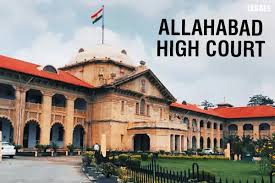M.Y. Eqbal, C.J. and T.S. Sivagnanam, J.@mdashThis Appeal is directed against the judgment and order dated 9.12.2009 in W.P. No. 23660 of 2009.
2. The Appellant is the writ Petitioner. The Writ petition was filed to quash the order passed by the Respondent Municipality dated 3.5.2008 and for a direction to the Respondent to sanction the approval for construction of building in the land at Survey No. 4477, belonging to the Appellant situated at Ooty.
3. The case of the Appellant is that his father purchased the land in question by a registered sale deed dated 16.5.2007 and even prior to the purchase, the Respondent by proceedings dated 14.5.2007, gave a no objection certificate for registration of the sale deed. According to the Appellant, the area in which the land is situated has been classified in the Master Plan for Udhagamandalam as #wooded area# and in such area constructions which are permissible in the primary vegetative zone could be made and therefore, the Appellant submitted an application for sanction of building plan. This application was rejected by an order dated 3.5.2008 by placing reliance of Rule 7(2) of Tamil Nadu District Municiplaities (Hill Station) Building Rules 1993 (hereinafter referred to as ''the Rules''). It is further contended that the Respondent granted permission for construction in the adjacent plot and therefore the order of rejection of the Appellant''s application is erroneous.
4. The Municipality filed a counter affidavit in the Writ Petition and submitted that the writ petition is not maintainable as the Appellant was not exhausted the alternative remedy provided u/s 217DD(2) of the Tamil Nadu District Municipalities Act, 1920 (hereafter referred to as the''Act''). Further, it is submitted that the no objection certificate given by the Municipality for registration of the sale deed is not a ground to grant planning permission for construction of a residential building in a wooded area. Further under the Rules, the Respondent is empowered to grant the approval of building plan subject to the condition that the building is a residential building with less than 250 sq.mtrs and for obtaining such approval, the requirements under the Rules have to be complied with.
5. According to the Appellant, he has sought for building plan approval to construct a residential building within 150 mtrs from the boundry of reserve forest and therefore the Municipality refused permission. Thus as per the provisions of the Building Rules, there is a prohibition to put up construction within 150 mtrs from the reserve forest and therefore the application was rightly refused.
6. The learned single Judge dismissed the writ petition accepting the stand taken by the Respondent Municipality and aggrieved by such order, the present Writ Appeal has been filed.
7. The learned senior counsel appearing for the Petitioner contended that in view of the no objection certificate granted by the Respondent, even prior to the registration of the sale deed, the Respondent is not justified in rejecting the Application. Further, it is contended that the land belonging to the Appellant is classified as ''wooded area'' and in terms of clause VI of the Development Control Rules, "No uses other than permissible in primary vegitative zone shall be permitted for the wooded land". Clause 2 of the Rules deals with Primary Vegetative Zone, which permits only a residential building of a single floor with height restriction for the building. Therefore, it is contended that the building plan application for planning approval ought not to have been rejected by the Respondent.
8. Further, the learned senior counsel would submit that when the Appellant sought for permission from the Respondent for registration of the sale deed, the Respondent Municipality by proceedings dated 14.5.2007, granted permission and one of the conditions in the said certificate is that construction can be put up in the land provided it is in confirmity with the Hill Station Building Rules and the Development Control Rules. Therefore, it is submitted that the Appellant is entitled to put up construction. Further, the learned Senior counsel would submit that the Director of Town and Country Planning by proceedings dated 16.9.2010, had issued a clarification regarding such approval, wherein it has been stated that there is no prohibition for construction of building in a private land within 150 mtrs from the boundry of the private forest subject to the condition specified in the Hill Station Building Rules and the Tamil Nadu Prohibition of Private Forest Act, 1949 and clearance from AAA Committee/Hill Area Conservation Authority. That the clarification is squarely applicable to the case on hand and the application for building permission ought to have been granted.
9. The learned Senior counsel appearing for the Respondent Municipality submits that the certificate issued by the Municipality dated 14.5.2007, is solely for the purpose of registration of the sale deed and the certificate clearly states that it is issued only for purchasing /selling, registering the document and for no other purpose. Further, there is also an embargo that the land in question cannot be sold as plots and if it is done, the no objection will become invalid. The learned senior counsel would submit that the clarification dated 16.9.2010 has no application to the case of the Appellant since that relates to the distance rule in respect of private forest, whereas, in the case on hand, the Appellant''s property is situated within the prohibited distance from a Reserve Forest. Therefore, it is submitted that the application submitted by the Appellant was rightly rejected by the Municipality.
10. We have heard the learned Counsels for the Appellant as well as the Respondent and considered the entire materials available on record.
11. In exercise of power conferred u/s 217-C read with Sub-Section 1 of Section 303 of the Tamil Nadu District Municipalities Act, the Tamil Nadu District Municipalities (Hill Station) Building Rules, 1993 was enacted. The said rules were made applicable to all the Hill Stations specified in schedule 2 of the Act and to all other local bodies in the hill areas to which the provisions of the Act are extended. It is not in dispute that the provisions of the Rules are applicable to Udagamandalam Municipality. Rules 2 (xxviii) defines "wooded land" to mean any area where a number of trees are existing but not declared as reserve forest. Rule 2(xxvii) defines Reserve Forest to means forest notified under the Tamil nadu Forest Act, 1882. Further, the person who intends to construct or re-construct a building is required to make an application for approval of building and site under Rule 3 of the Rules and the said requirements are given under Rule 4. Rule 7 deals with location of building which is relevant for the present case, which reads as follows:
7.LOCATION OF BUILDING: (1)Every person who constructs or alters, reconstructs or adds to the building, shall whereever the site is within 15 meters of any tank, reservoir, wtercourse, rivers, freshwater channel or well, carry out such measures as may be necessary or as the Government may direct for the purpose of preventing any contamination of or any risk of the drainage of the building into such tank, reservoir, wtercourse, rivers, freshwater channel, or well.
(2) No assignment or land shall be made for agricultural purpose or for any other purpose including residential purpose within 150 meters from the boundaries of reserve forest and wooded lands or areas of special interest as may be declared by the Government from time to time.
12. In terms of Rule 7(2) of the Act, no assignment of land shall be made for agricultural purpose or for any other purpose including residential purpose within 150 mtrs from the boundaries of resreve forest and wooded lands. Thus, it is seen that there is restriction for carrying out the agricultural operations or for residential purpose within 150 mtrs from the boundary of the reserve forest and the wooded land.
13. The learned senior counsel appearing for the Appellant contended that Rule 7(2) of the Rules deals with only assignment and it does not speak about the building plan approval and the respodnent has erroneously applied the said rule and rejected the Appellant''s application.
14. We are unable to agree with the learned Senior Counsel for the Appellant for the simple reason that the embargo under Rule 7(2) of the Rules is with regard to the agricultural activities and residential purpose within the distance of 150 mtrs. from the Reserve Forest. Though the expression ''assignment'' has not been defined either under the Act or Rules, we are of the view that it should not be given a restrictive meaning to mean as if assignment given by the Government but should be read to mean assignment to include conveyance or transfer or part away with property etc. Thus, the Rule clearly prohibits any residential activities within 150 mtrs from the boundaries of reserve forest and wooded land.
15. It is noticed that when the Appellant purchased the property, he had sought for prior permission from the Respondent Municipality and such permission was granted by certificate dated 14.5.2007. The learned Senior counsel for the Appellant submitted that the certificate enables the Appellant to put up construction and this was not taken into consideration by the Respondent. A careful reading of the certificate dated 14.05.2007 shows that it has been issued only for the purpose of purchasing and registering the document and condition No. 5 of the Certificate clearly states that construction can be put up in the land provided it is in confirmity with the provisions of the Act and Rules as well as the Development Control Rules.
16. We have seen Rule 7(2) of the Rules, which prohibits construction within a distance of 150 mtrs. The reason for rejection of the planning permission is due to the fact that the site in question is within 150 mtrs of the reserve forest. Therefore, when there is a prohibition from putting up construction within such distance, the Appellant cannot insist that the Respondent Municipality are bound to give planning permission in view of the no objection certificate given at the time of registration of the sale deed. Thus, the mere issuance of the no objection certificate dated 14.5.2007 does not entitle the Appellant for planning permission as a matter of right.
17. Reliance was placed by the learned Senior counsel for the Appellant on a clarification issued by the Director of Town and Country Planning, dated 16.9.2010. We perused the said clarification letter and the same cannot be applied to the facts of the present case as it relates to the case of a private land which is within the distance of 150 mtrs from the boundry of a private forest and not reserve forest as in the case of the Appellant. In view of the above facts, the reliance placed upon the provisions of the Development control Rules is misconceived.
18. In view of the above factual and legal position, we are of the view that the learned Judge rightly dismissed the Writ Petition.
19. In the result, the Writ Appeal fails and the same is dismissed. No costs.

